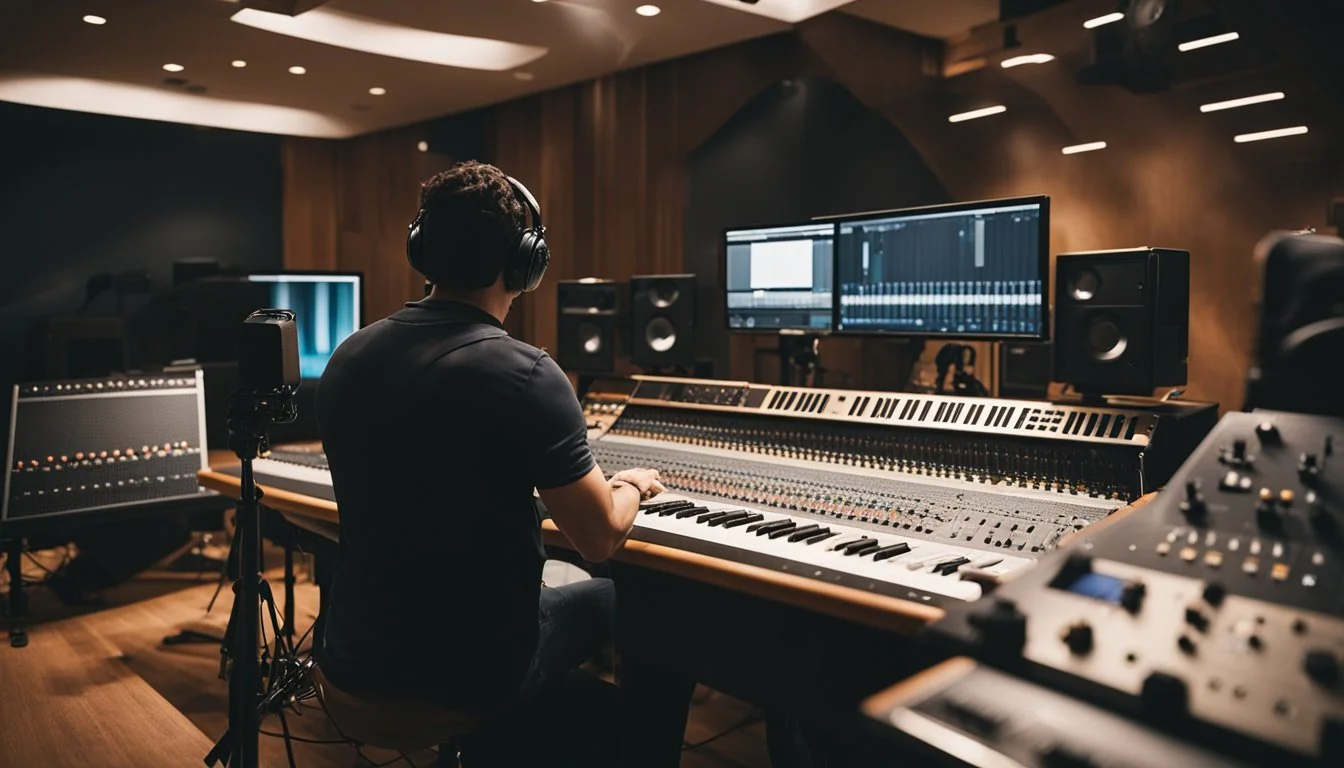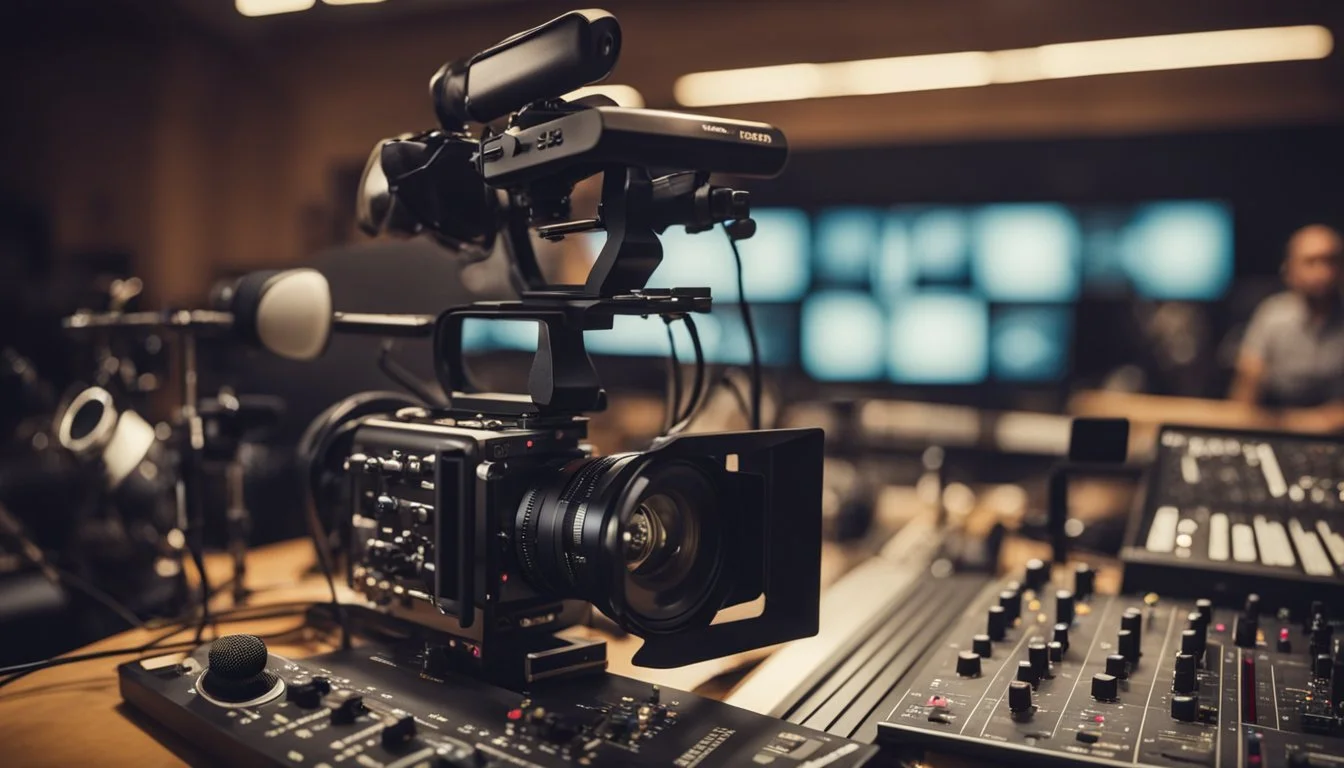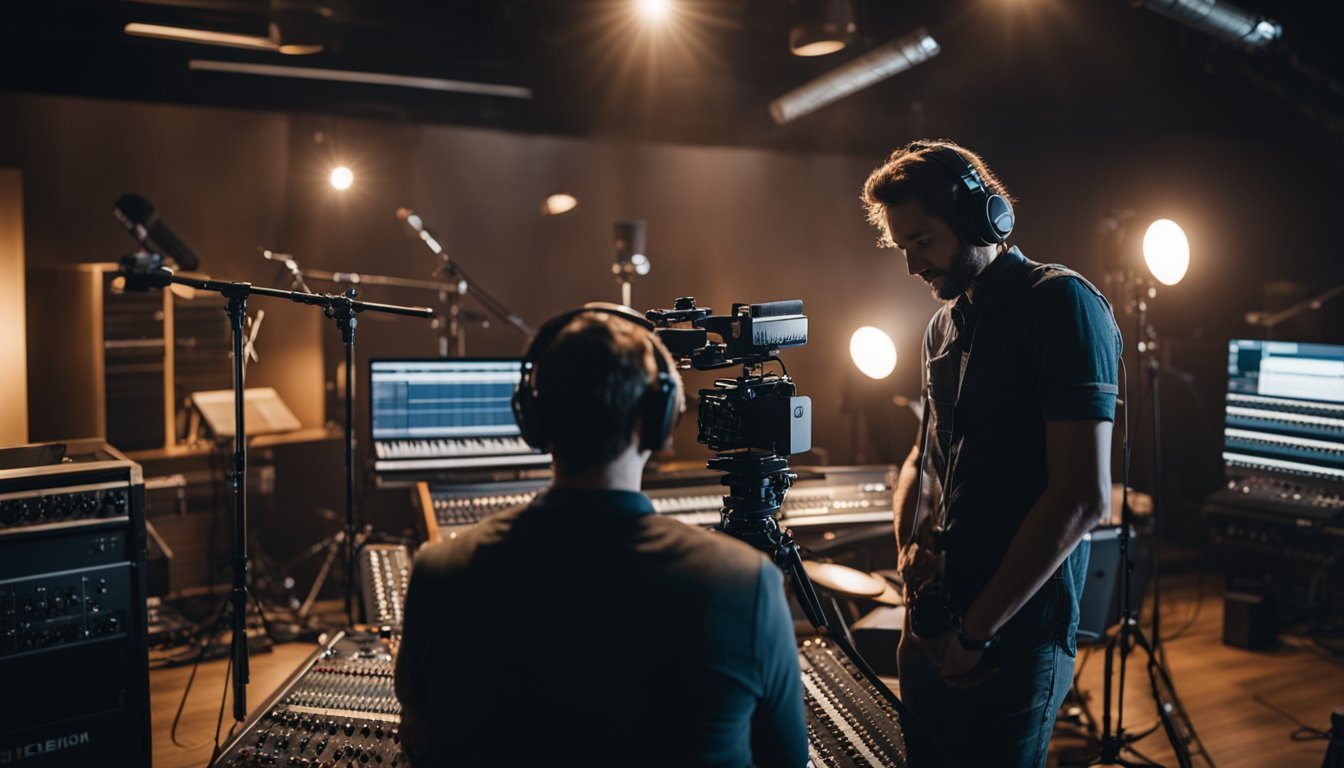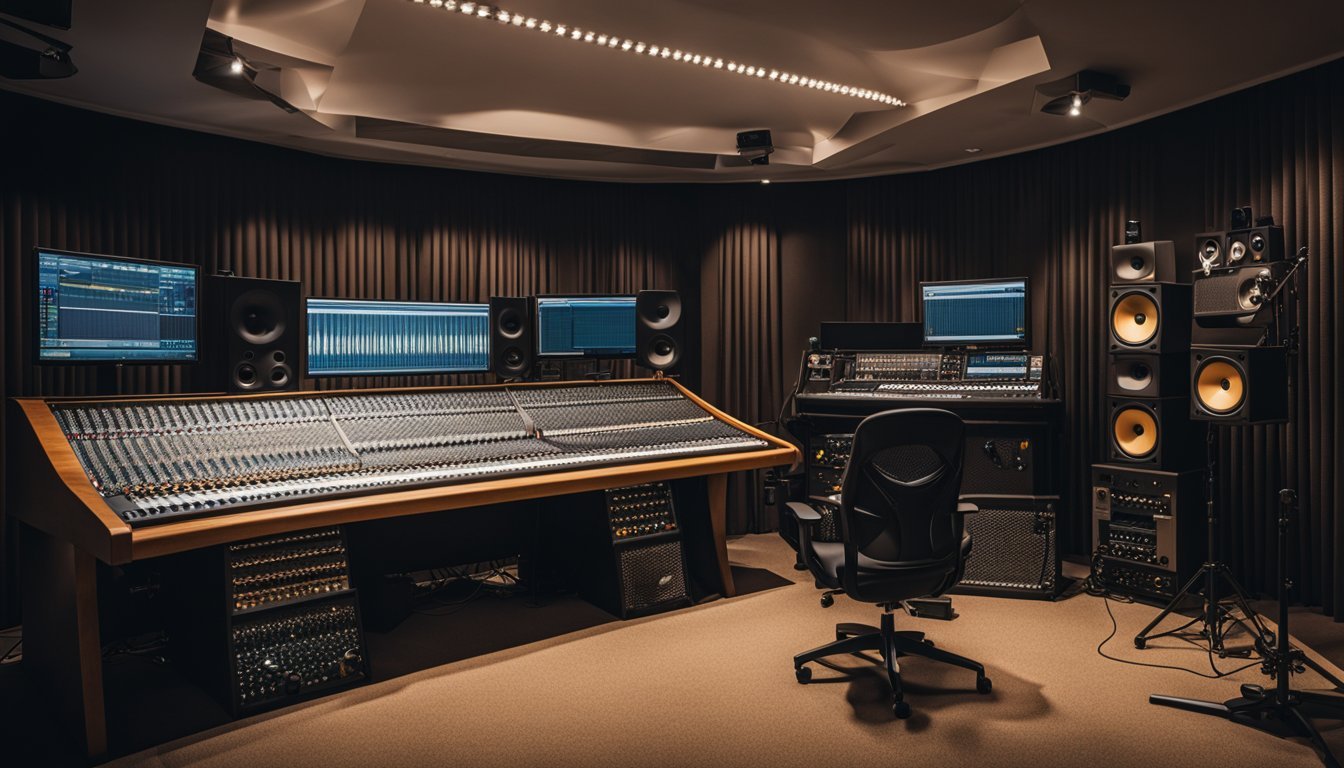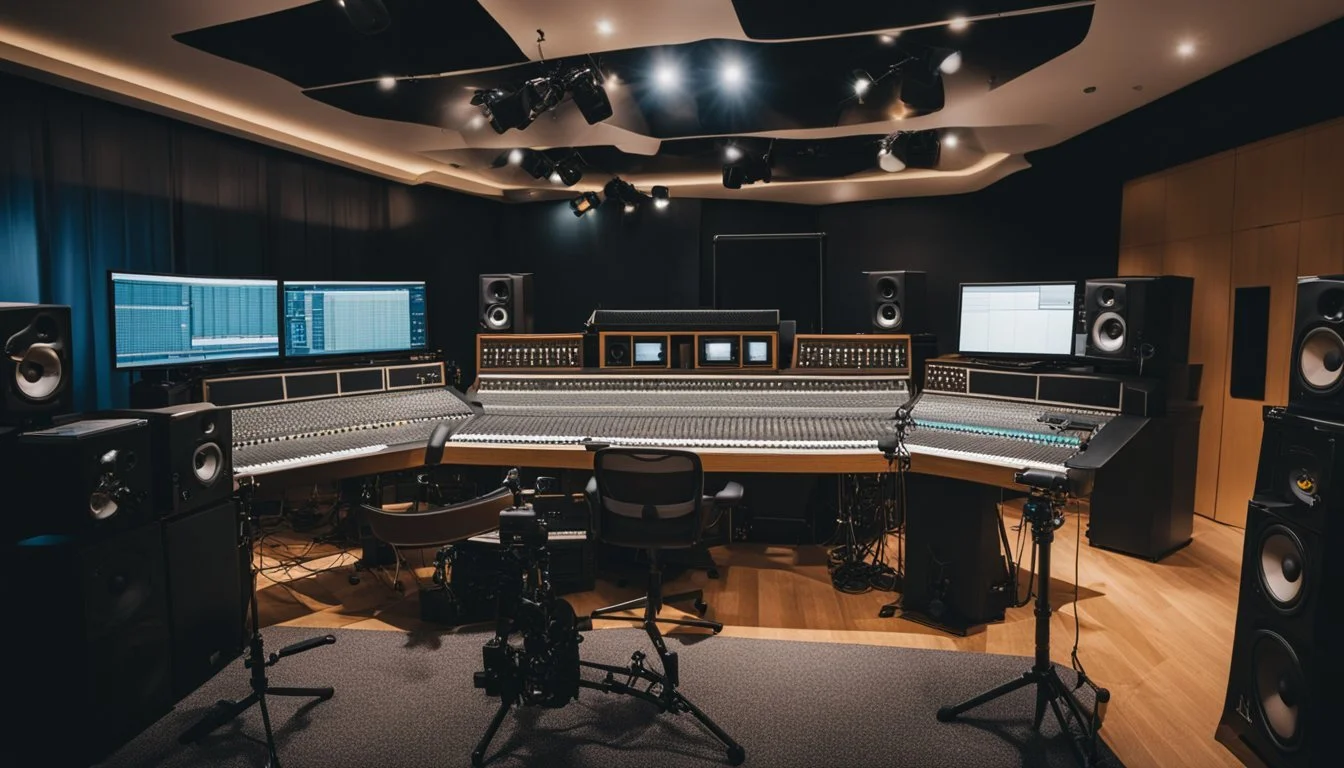The Art of the Music Documentary
Capturing Creativity and Impact
The art of the music documentary lies in its ability to capture not just the performance, but the soul of the creative process. Drawing viewers into the world of artists, these films shed light on how music is crafted, revealing the challenges and triumphs that musicians face. They allow us to see the raw, unfiltered moments that often define an artist's journey.
From iconic figures like Madonna to the heartfelt tales of artists such as Amy Winehouse, music documentaries offer a profound inside look at the lives and legacies of musicians. They present an unguarded perspective, letting the audience experience the highs and lows of the industry. These stories are not just about music, but about the individuals behind the melodies and lyrics, their inspirations, and the impact they have on the world around them.
With documentaries like "Echo In The Canyon" exploring the influential Laurel Canyon music scene of the 1960s and 1970s, viewers gain a deeper appreciation for the artistic movements that shape genres. The emotional and intellectual engagement these films evoke make them more than just a visual experience; they become an integral part of understanding and appreciating the rich landscape of the music industry.
Defining the Music Documentary
Music documentaries are a unique genre that captures the essence of musicians, their creative process, and their cultural impact. This section explores the history and critical components that define music documentaries.
Historical Evolution of Music Documentaries
Music documentaries have a rich history, from early concert films to in-depth portraits of musicians' lives.
In the 1960s, films like "Don't Look Back" focused on Bob Dylan, showcasing behind-the-scenes footage and live performances.
The genre evolved in the 1970s and 1980s, highlighting rock bands and their tours.
In the 21st century, documentaries expanded to explore diverse genres and include multi-faceted storytelling, making them pivotal in modern cinema.
Key Characteristics and Elements
Music documentaries typically feature live performances, interviews, and archival footage.
They often include narration to weave stories, giving context to the music and the musicians' lives.
The use of music itself amplifies the narrative, adding emotional depth and highlighting key moments.
These films aim to provide an authentic representation of the artist, capturing both their personal and professional journeys.
Many also address broader themes such as social and cultural issues, enhancing their impact.
The Creative Process in Music
The creative process in music involves unique journeys for different artists, encompassing their personal stories, songwriting methods, and the behind-the-scenes intricacies of album production.
Artist Profiles and Biographies
Artist profiles and biographies often delve into the lives and careers of musicians, providing intimate insights into their backgrounds and evolution. These stories highlight pivotal moments, influences, and achievements that have shaped their artistry.
Biographies serve as a lens through which fans can understand an artist's motivations and struggles. Documentaries like "Amy" about Amy Winehouse illustrate the fragility and passion within an artist's journey, while capturing raw, unfiltered moments that define their legacy.
Songwriting and Composition
Songwriting and composition are central to a musician's creative process. This involves a blend of inspiration, lyrical crafting, and musical arrangement. Musicians draw on personal experiences, emotions, and world events to write songs that resonate with audiences.
Innovative songwriters like Taylor Swift frequently experiment with different genres, pushing creative boundaries. They harness storytelling to create compelling narratives within their music. The process includes drafting lyrics, refining melodies, and aligning the song’s mood with its message.
Behind-the-Scenes of Album Production
Album production involves meticulous planning and collaborative efforts among musicians, producers, and engineers. This phase includes recording individual tracks, mixing, and mastering to achieve the desired sound quality.
Each recording session focuses on capturing pristine audio, often layering multiple takes of instruments and vocals. The mixing process ensures that these elements blend harmoniously, while mastering fine-tunes the final product. Renowned producers and artists work closely to experiment with sounds, thereby enhancing the album's artistic vision.
Filmmaking Techniques
Capturing the essence of the musician’s creative process and their impact through documentaries involves meticulous planning and a variety of filmmaking techniques. These techniques include the way performances are filmed, conducting interviews, and the utilization of archival footage.
Cinematography in Capturing Live Performances
Effective cinematography is crucial in documenting live music performances. Close-up shots on instruments and musicians' expressions provide an intimate view of the artistic process. Wide-angle shots capture the atmosphere and audience engagement.
Using multiple cameras can ensure a dynamic viewing experience. High-quality audio recording is equally important to convey the impact of the performance. Lighting plays a critical role in defining the mood and can range from concert lighting to more controlled studio setups.
Choosing the right angles and camera movements, such as tracking shots or crane shots, can emphasize the physicality and emotion of the performance. Properly capturing these elements allows viewers to feel as though they are part of the experience.
Interviewing Artists and Collaborators
Conducting interviews with musicians, producers, and collaborators adds depth and context to the documentary. These interviews should be well-researched and strategically planned. Open-ended questions encourage detailed and candid responses, revealing the subject's creative process, challenges, and inspirations.
Utilizing supportive visuals, like cutaways of the studio or behind-the-scenes footage, can enrich the narrative. Interviews can be conducted in various settings, including homes, studios, or concert venues, to add authenticity and variety.
It's important to create a comfortable environment for the interviewees. Building rapport and ensuring a relaxed atmosphere often lead to more insightful and engaging content.
Archival Footage and Its Significance
Archival footage is a valuable resource in music documentaries. It offers historical context and a deeper understanding of a musician’s evolution. This can include old concert footage, studio sessions, interviews, and personal videos.
Incorporating archival material connects past and present, demonstrating the growth and enduring impact of the musician. Careful selection and editing of archival content ensure relevance and alignment with the documentary's themes.
Clear labeling and contextualization of archival footage within the narrative help viewers make connections. The ethical use of archival material, including obtaining necessary permissions, is essential to maintain credibility and respect for the subjects involved.
Sociocultural Impact of Musicians
Musicians influence both popular culture and social movements, leaving a lasting imprint on societal values and collective action.
Influence on Popular Culture
Musicians shape trends, introduce new styles, and reflect societal moods. For instance, Taylor Swift's genre-blending and storytelling have redefined pop music, inspiring fellow artists to experiment.
Artists like Madonna and Amy Winehouse have had significant cultural impact. Madonna's ever-evolving image in "Truth or Dare" highlighted her influence on fashion and gender norms.
Live concerts also play a key role in urban cultures, bringing people together in shared experiences and creating lasting memories.
Music as a Tool for Social Change
Music has long been a tool for advocating social causes. Songs like Bob Dylan’s "Blowin' in the Wind" became anthems for civil rights movements.
Artists use their platform to highlight injustices and inspire action. Beyoncé’s performances often address issues of racial and gender inequality, amplifying marginalized voices.
Live music events frequently serve as fundraisers and awareness campaigns, such as benefit concerts and festival collaborations aimed at social impact.
Case Studies of Iconic Music Documentaries
Music documentaries offer unparalleled insights into the creative processes and cultural impacts of legendary musicians. Key works have defined the genre through their unique approaches and lasting influences.
Analyzing Groundbreaking Works
"The Beatles: Eight Days a Week – The Touring Years" directed by Ron Howard, offers an immersive look at The Beatles' early touring years, emphasizing their groundbreaking influence on modern music and concert experiences. The film highlights rare footage and intimate moments, showcasing the band’s journey from 1962 to 1966.
"Stop Making Sense" captures Talking Heads at their creative zenith. Directed by Jonathan Demme, this 1984 concert film is lauded for its innovative stage design and cinematography. It revolutionized concert documentaries by focusing as much on the audience’s visceral experience as on the band's performance.
"Beethoven's Ninth: Symphony for the World" explores one of classical music's most enduring works. The documentary delves into the symphony’s emotional and cultural resonance, tracing its journey from Beethoven’s composition to its status as an emblem of triumph and unity across the globe.
Impact on the Music Industry and Fandom
"The Beatles: Eight Days a Week – The Touring Years" significantly amplified interest in archival concert footage and set a high standard for quality with its meticulous restoration efforts. This film brought The Beatles' live performances to new generations, sparking renewed appreciation among both old and young fans.
"Stop Making Sense" not only influenced future concert films but also established Talking Heads as pioneers in live performance art. Its innovative approach emphasized the interconnectedness of music, performance, and film artistry, affecting how future concert documentaries were conceptualized.
"Beethoven's Ninth: Symphony for the World" reinforced the timeless appeal of classical music, expanding its reach beyond traditional audiences. By connecting Beethoven's personal struggles with his musical triumphs, the documentary has made classical music more accessible and emotionally impactful for contemporary viewers.
The Role of Sound and Music Scoring
Sound and music in a documentary film are pivotal in evoking emotions and shaping the viewer's connection to the narrative. This section explores the creation of emotional resonance and the complexities of soundtrack selection and licensing.
Creating Emotional Resonance
Music scoring serves as the emotional backbone of a documentary film. By carefully choosing melodies and rhythms, composers can enhance the storytelling and deepen the audience's engagement.
In scenes of triumph, an uplifting score can amplify feelings of joy. Conversely, somber music may underscore moments of struggle or reflection.
Instruments play a crucial role, with strings often used to evoke sadness and brass to evoke power. Synchronizing music with film timing ensures that the audience's emotional journey aligns with the narrative arc.
Examples from acclaimed documentaries highlight how strategic music scoring adds layers of meaning, transforming simple visuals into profound experiences.
Soundtrack Selection and Licensing Challenges
Securing the right soundtrack involves artistic and legal hurdles. Filmmakers must choose pieces that fit the film's tone and budget constraints.
Licensing music requires navigating performance rights, synchronization licenses, and mechanical rights. Filmmakers often work with music supervisors to handle these complexities.
Budget limitations may necessitate seeking lesser-known tracks or original compositions, which can still be effective if they align with the film's core message.
Technological solutions, such as royalty-free music libraries, offer a viable alternative but might lack the emotive power of custom scores. Thus, balancing artistic vision with practical constraints remains a central task in documentary filmmaking.
Distribution and Audience Engagement
Distribution of music documentaries plays a crucial role in how effectively the film reaches its audience and fosters engagement. Channels of distribution vary from traditional film festivals to online platforms, each offering unique advantages. Accessibility remains important to ensure the widest possible audience.
Film Festivals and Theatrical Releases
Film festivals provide an excellent avenue for the initial screening of music documentaries. Festivals such as Sundance, Tribeca, and SXSW are pivotal in generating buzz and attracting media attention. These events create opportunities for filmmakers to connect with industry professionals, potential distributors, and audiences who appreciate the art of documentary filmmaking. A theatrical release offers the added benefit of a communal viewing experience, often enhancing the emotional impact.
Engagement in theaters frequently takes the form of Q&A sessions with filmmakers and featured musicians. These sessions offer viewers deeper insights into the creative process and personal stories behind the film. Additionally, limited theatrical runs can serve as leverage for negotiating distribution deals with streaming services and broadcasters.
Online Platforms and Accessibility
The rise of online platforms has revolutionized the distribution landscape for music documentaries. Services such as Netflix, Amazon Prime, and Disney+ provide unprecedented access to global audiences. This digital approach democratizes viewership, allowing people from various geographical locations to engage with the film. Accessibility features, such as subtitles and audio descriptions, further broaden the audience base.
Online platforms also facilitate audience engagement through integrated social features. Viewers can rate, review, and easily share documentaries within their social networks. Live-streamed events and virtual premieres offer interactive experiences, enabling filmmakers to engage with audiences in real-time. This immediate feedback helps in understanding audience reception and refining future projects.
Ethical Considerations
Creating music documentaries involves careful attention to ethical matters. Key concerns include how artists and other subjects are portrayed and ensuring all legal rights are managed properly.
Portrayal of Artists and Subjects
Documentary filmmakers must carefully depict artists and subjects. Accurate representation preserves the integrity of the project and respects those involved.
Consent is critical. Artists should be fully aware of how their image and words will be used. This includes understanding the context and ensuring consent forms are signed.
Sensitivity towards the personal lives and challenges of musicians is necessary. Filmmakers should avoid exploitative practices and respect privacy boundaries.
Legal Issues and Rights Management
Adhering to legalities is crucial. Filmmakers need to secure rights for all music, footage, and images included in the documentary.
Fair use is a common misconception. Using copyrighted material without proper authorization can lead to legal issues. Securing permissions and licenses from copyright holders is essential.
Clear contracts help avoid disputes. They should outline usage rights, revenue sharing, and credit attribution, protecting filmmakers and subjects alike.
Future Trends in Music Documentaries
Emerging trends in music documentaries are influenced by technological progress and innovative storytelling methods. These trends are reshaping how audiences engage with and perceive musical artists and their creative journeys.
Technological Advancements
Advancements in technology are paving the way for more engaging and immersive music documentaries. Virtual Reality (VR) and Augmented Reality (AR) are enabling viewers to experience live performances and behind-the-scenes footage in ways never before possible.
Additionally, 4K Ultra HD and HDR technologies are enhancing visual quality, making every frame more vivid and lifelike. This level of detail adds depth to the storytelling, making the viewer feel closer to the artist's environment and creative process.
Moreover, advancements in AI and data analytics allow filmmakers to analyze audience preferences, tailoring content to align with what viewers find most compelling. This could lead to more personalized documentary experiences and increased viewer engagement.
New Narratives and Storytelling Techniques
Innovative storytelling approaches are transforming the narrative structure of music documentaries. Modern filmmakers are embracing non-linear storytelling, allowing for creative ways to portray an artist's career, integrating flashbacks, and parallel storylines to build a more complex, engaging narrative.
Interactive documentaries are emerging as another trend. These documentaries allow viewers to choose different paths or perspectives, providing a more personalized viewing experience. Platforms like Netflix and YouTube are testing these formats, opening new possibilities for content creators.
Furthermore, social media integration is becoming vital. Real-time interaction with audiences through platforms like Instagram, Twitter, and TikTok can create a richer, more immediate connection between the documentary's subjects and its viewers. This integration can also provide valuable promotional opportunities and real-time feedback.
Advancements in technology and new storytelling techniques are elevating the music documentary genre, offering an enriched experience for audiences worldwide.


